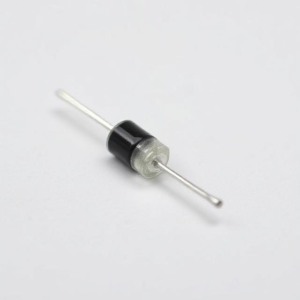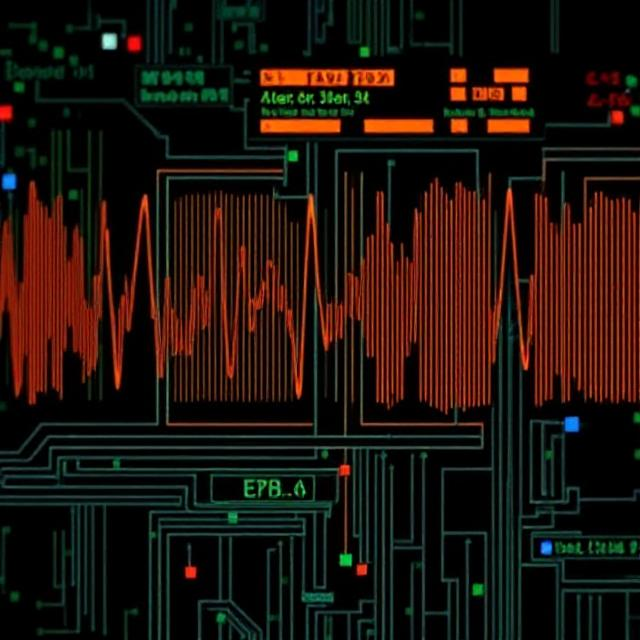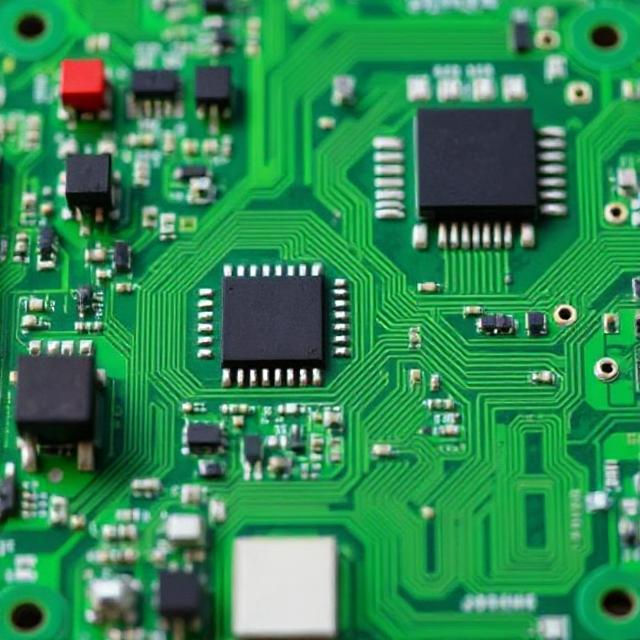Diodes and Their Types – Explained Simply
A diode is an electronic component that allows current to flow in only one direction, and it blocks current from flowing in the opposite direction. Think of it like a one-way valve for electricity!
Diodes are crucial in electronics for tasks like rectification (turning AC to DC), signal processing, and protection circuits. Let’s dive into the basics and the different types of diodes.

1. What is a Diode?
A diode is a semiconductor device made of two materials: p-type (positive) and n-type (negative). These two types of materials are joined together to form a PN junction. The behavior of this junction is what gives the diode its special property of letting current flow in only one direction.
- Anode (+): The positive side where current flows into the diode.
- Cathode (-): The negative side where current flows out of the diode.
- Forward Bias: When the anode is connected to the positive side of the power source, and the cathode is connected to the negative side, current flows through the diode (this is the “on” state).
- Reverse Bias: When the anode is connected to the negative side of the power source and the cathode to the positive side, the diode blocks current (this is the “off” state).
2. Types of Diodes:
There are many types of diodes, each designed for different purposes. Here’s a look at some common types:
1. Standard Diode (Rectifier Diode):
- Purpose: Mainly used to convert AC (alternating current) to DC (direct current). This process is called rectification.
- Example Use: Power supply circuits where AC needs to be converted into DC.
2. Zener Diode:
- Purpose: Specially designed to allow current to flow in both directions, but only when the voltage exceeds a certain value (known as the Zener voltage). It is used for voltage regulation.
- How It Works: In reverse bias, if the voltage exceeds the Zener voltage, it starts to conduct and clamps the voltage, keeping it stable.
- Example Use: To protect circuits from over-voltage or maintain a constant voltage.
3. Light Emitting Diode (LED):
- Purpose: Emits light when current flows through it. This happens because when electrons and holes combine in the diode, energy is released in the form of light.
- Example Use: Indicators, displays, streetlights, and televisions.
4. Schottky Diode:
- Purpose: Known for its low forward voltage drop and fast switching speed. Schottky diodes are made of metal and semiconductor material rather than the traditional p-n junction.
- Example Use: Used in high-speed switching applications, power supplies, and RF circuits.
5. Photodiode:
- Purpose: A diode that reacts to light. It generates a small current when exposed to light, which makes it useful for light detection and sensing.
- Example Use: Used in optical communication systems, cameras, and light sensors.
6. Varactor Diode (Variable Capacitance Diode):
- Purpose: A diode that acts like a variable capacitor, with the capacitance changing based on the reverse voltage applied to it.
- Example Use: Used in tuning circuits, such as in radio receivers and frequency modulation (FM) applications.
7. Tunnel Diode:
- Purpose: A type of diode with a very high forward current due to quantum tunneling. Tunnel diodes are known for their extremely fast switching speeds.
- Example Use: Used in high-speed oscillators and microwave circuits.
8. Avalanche Diode:
- Purpose: A diode that allows a high reverse current to flow when the voltage exceeds a certain threshold (similar to a Zener diode but with a different mechanism).
- Example Use: Used in applications that require over-voltage protection and surge protection.
9. P-N Junction Diode:
- Purpose: The most basic type of diode, consisting of a simple p-n junction. It is primarily used for rectification (AC to DC conversion).
- Example Use: Power supplies and many low-power applications.
10. SIDAC Diode:
- Purpose: A diode that can conduct in either direction once a certain threshold voltage is reached. It is often used in over-voltage protection.
- Example Use: Over-voltage protection in power supplies and telecom equipment.
3. How Do Diodes Work?
- Forward Bias (On State): When the diode is connected in such a way that the anode is positive and the cathode is negative (forward biased), current flows easily through the diode. This is the “on” state where the diode conducts electricity.
- Reverse Bias (Off State): When the diode is connected with the anode negative and the cathode positive (reverse biased), the diode blocks current, and no electricity flows through it. This is the “off” state where the diode does not conduct.
However, certain diodes like Zener diodes or Schottky diodes have special characteristics that allow them to behave differently in reverse bias.
4. Applications of Diodes:
- Rectification: In power supplies, diodes are used to convert AC into DC. This is important for powering devices like smartphones, computers, and LED lights.
- Protection Circuits: Zener diodes or avalanche diodes protect circuits by limiting voltage spikes.
- Light Emission: LEDs are used for visual indicators, displays, and lighting.
- Signal Modulation: Diodes are used in radio circuits and communication devices to process signals.
- Power Regulation: Diodes help regulate power flow in power supply systems, ensuring the voltage stays within safe limits.
5. Summary:
- A diode is a two-terminal device that allows current to flow in only one direction.
- There are many types of diodes, each designed for different uses, such as LEDs for lighting, Zener diodes for voltage regulation, and Schottky diodes for fast switching.
- Diodes work by allowing current in the forward direction (when the anode is positive) and blocking it in the reverse direction (when the cathode is positive).











